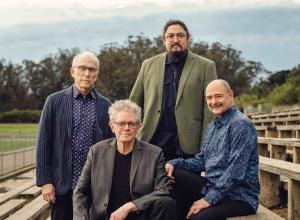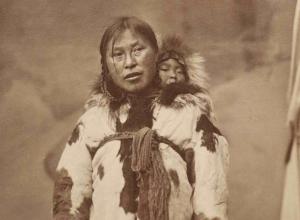Bright Young Librarians: Jillian Sparks
Our Bright Young Librarians series continues today with Jillian Sparks, Special Collections Librarian with Queen's University Library in Kingston, Ontario:

What is your role at your institution?
My official title at Queen's University is Special
Collections Librarian. As a Special Collections Librarian I do a bit of
everything--collection development, reference, and cataloguing. However, my
primary focus is instruction and outreach. Currently we are engaged in making
our collection more accessible to faculty and students. To promote awareness of
our holdings, I am doing a series of pop-up exhibits over the next few months
in conjunction with Robert Burns Day, Valentine's Day, International Women's
Day, and National Poetry Month. I set up a table with materials and free
buttons at the entrance of our main library and talk to students about how they
can use our collections. Leaving the reading room to meet the students where
they are more comfortable helps prepare them to take the next step and visit us
in the reading room as well as presents Special Collection with a more personal
face. With these same goals in mind, I
also manage our Instagram and Twitter accounts.
How did you get started in rare books?
I was fortunate enough to be exposed to book history and special collections as an undergraduate at Creighton University. I took a course called "Not Lost in Translation" on the history of the bible that inspired me to think about book transmission and book history. While I was completing my M.A. in English at the University of Victoria I had my epiphany realizing that I loved working with special collections materials and was happiest in that environment. My conversion from English studies to book studies developed through my relationship with one book in particular--Mercury: or the Secret and Swift Messenger by John Wilkins. A secret codebook published in 1641, Mercury is full of unique charts and figures describing how the reader can master the art of secret communication. I first encountered Mercury in a textual studies and methods course which was held in Special Collections. Our wonderful professor, Dr. Erin Kelly introduced us to bibliography. We each chose a book to collate, write signature statements for, examine chain lines, and talk about type setting. The pages of Mercury were dirty and the book had been rebound in a simple grey paper case, but it captured my interest.
Seminar papers and the rigors of graduate school kept me busy until six months later while working with Dr. Janelle Jenstad and special collections staff on a 17th and 18th-century English books exhibit when Wilkins' book showed up again. Questions on why would someone write a code book in the 17th century and why would someone collect it 200 years later plagued me. Thankfully, Dr. Kelly agreed to supervise a directed study over the summer. During my three-month love affair with Mercury; I would sneak away from my master's essay at every chance to touch, feel, and smell the pages of that book. The months of bibliographic study--excavating every detail about publication and John Wilkins's history--culminated in a comparative study between Mercury and Wilkins's other work, Essay Towards a Real Character and Philosophical Language (1668), in which I discussed the similarity between the secret codes in the former and universal language in the latter. From then on there was no going back for me, I needed to pursue rare book librarianship.
From the University of Victoria, I headed east to the
University of Iowa in order to pursue a joint MLIS degree and Certificate in
Book Studies. I was very lucky to be selected as one of the Olson Graduate Research
Assistants for Special Collections and University Archives. This two year
position prepared me for the many facets of rare book librarianship and allowed
me to work with several other Bright Young Librarians--Patrick Olson, Colleen
Theisen, Margaret Gamm, and Amy Hildreth Chen--who have all been great mentors!
Where did you earn your MLS/advanced degree?
I earned my M.A. in English with a specialization in
Medieval and Early Modern Studies from the University of Victoria. My MLIS and
Certificate in Book Studies is from the University of Iowa. Iowa's School of
Library and Information Science partners with the Center for the Book to offer
a joint program in library science and book studies that involves both book history
and book arts. I focused on book binding which has been invaluable in my own
research and enabled me to make historical book binding models I use when
teaching.
Favorite rare book / ephemera that you've handled?
I am sentimental about Mercury and all of John
Wilkins' works and continue to study them. In general, I am drawn to historical
scientific works. I am interested in what language is used to convey scientific
knowledge and how it creates scientific community. Similarly, I find scientific
diagrams and illustrations beautiful and am fascinated with how the visuals
complement the text. The History of Hydraulics collection is my favorite
collection at the University of Iowa and I am very excited to begin exploring
our scientific collections at Queen's, especially our botanical collection. We
have a herbarium compiled by Catherine Parr Traill that is exquisite.
What do you personally collect?
I have an ever growing collection of Jane Austen books
and related materials. Tea with Jane Austen is one of the latest
additions. My husband and I also collect cookbooks.
What do you like to do outside of work?
I love to cook, hence the cookbook collection. I live at the confluence of the St. Lawrence River and Lake Ontario and am looking forward to hiking, fishing, camping, and just exploring southeast Ontario this summer.
What excites you about rare book librarianship?
Everything about it excites me! It is so satisfying to
unravel the provenance, unique textual characteristics, and identify binding
features while cataloguing. I think this side appeals to every puzzle lover.
Yet at the same time rare book librarianship is all about sharing discoveries
and helping to facilitate new ones. I love the outreach side of my job and
working with students in the classroom and our reading room.
Thoughts on the future of special collections / rare book librarianship?
Special collections as a field is going through a very
exciting transition. Thanks to social media and a number of digital projects,
people are now pushing the traditional boundaries of rare book librarianship.
As librarians share materials through Tumblr, Instagram, and various video
platforms, people get to learn about collections and see behind the veil of the
reading room. Digital projects like crowdsourcing transcription and identifying
photographs are also incredibly engaging. As a result, I think administrators
look to special collections to lead new digital research opportunities and to
provide an active learning environment for students. I am especially excited
about the evolution of special collections instruction and the overall impact
it will have on undergraduate research. We need to cultivate our future readers
and advocates and I think that begins in the classroom.
Any unusual or interesting collection at your library you'd like to draw our attention to?
Queen's is home to an extensive Canadiana collection that covers the early history of Canada to Canadian fine press and artist's books. We recently received a new collection, the Schulich-Woolf Rare Book Collection, about 400 volumes mostly on British history and culture of the 16th through 18th centuries. We are also home to Canadian writer and journalist Robertson Davies' personal library and have maintained his library's original order. Davies collected 19th century theatre history when no one else was really interested. The collection includes tinsel prints of several Victorian actors.
Any upcoming exhibitions at your library?
Our current exhibit is on Vero Wynne-Edwards and the 1937 MacMillan-Thebaud Expedition. In the spring, Kim Bell will be curating an exhibit on magazines produced by prisoners at the Kingston Penitentiary called "Prison Sentences: Penitentiary Literature in Kingston." Kim has collaborated with Canada's Penitentiary Museum in order to showcase the full history of the prison press and I think it will be quite fascinating. There will be a digital exhibit as well. We will be featuring books from our Children's Books collection over the summer and will open in the fall with an exhibit celebrating the 175th anniversary of Queen's.















